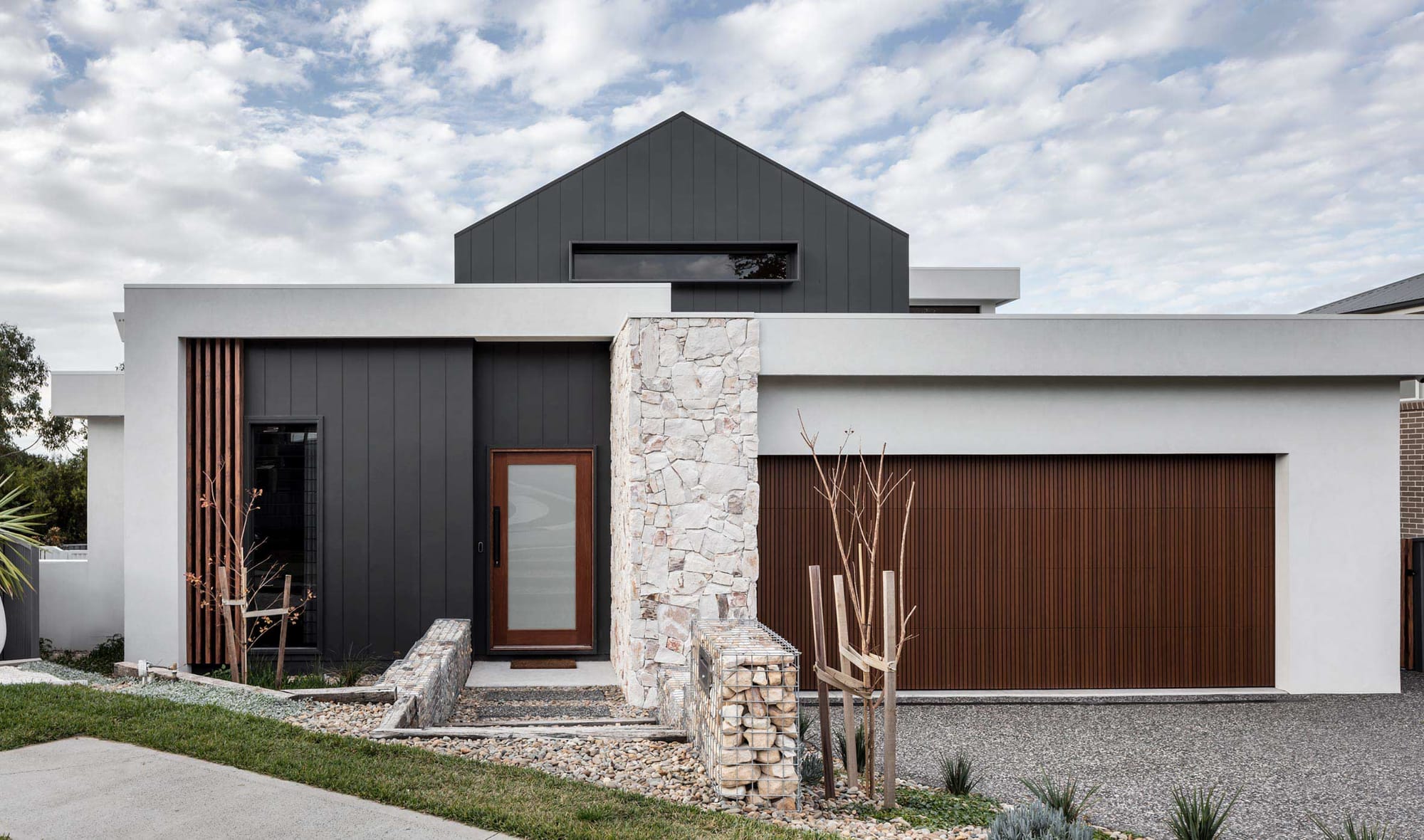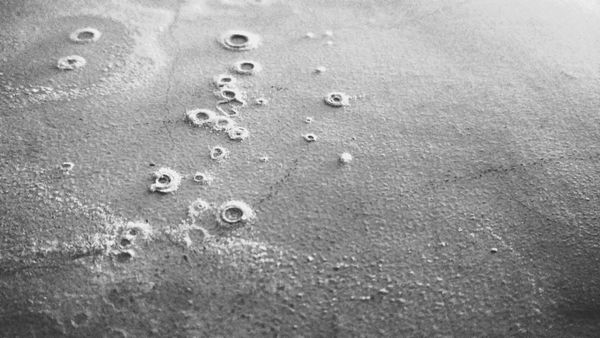Ever wondered how to give your home's exterior a stylish new look that's low maintenance and energy efficient? Choosing a cladding system is a great option, but with so many materials and styles to pick from, it can feel overwhelming. Don't worry, we've got you covered.
In this article, we'll walk you through the main cladding options, from brick and stone to timber and metal, to help you find what's right for your property and budget. We'll look at the pros and cons of each material so you can make an informed choice.
By the end, you'll feel equipped to find a cladding system that ticks all the boxes for appearance, durability and performance.
What Is Cladding and Why Is It Important?
Cladding refers to the materials attached to the exterior of a building to form a weather-resistant outer layer. It protects your home from the elements while also impacting how it looks.
Cladding comes in many options like timber, metal, masonry, fibre cement, composite, and plastic. The type you choose affects your home’s performance, cost, appearance and property value.
Cladding shields your home, keeping water and weather out while controlling temperature and sound. It impacts heating and cooling needs, potentially lowering energy bills. Proper cladding also resists fire, rot and pests.
Appearance-wise, cladding determines your home’s style from sleek and modern to traditional. It comes in a range of textures, colours and finishes to match your taste. The right cladding can boost your property value, while the wrong choice may decrease it.
Environmentally, cladding varies. Consider each option's lifespan, durability, embodied energy, emissions and waste. Choose sustainable, eco-friendly cladding that’s also suitable for your climate.
In the end, cladding should suit your needs and priorities. Compare types based on performance, cost, appearance, environmental impact and availability before deciding. The ideal cladding protects your home, pleases the eye and lightens your footprint – all while staying within budget.
Key Factors to Consider When Choosing a Cladding System
When it comes time to choose a cladding system for your home, there are several key factors to keep in mind. The most important things to consider are:
- Durability and lifespan. You'll want cladding that can stand up to your area's climate and weather conditions for a long time. Think about how long you plan to live in the home and choose cladding accordingly. More durable options like steel, aluminium and fibre cement typically last 50-100 years, while wood may only last 20-50 years.
- Appearance and style. The cladding you choose impacts your home's kerb appeal and overall look. Consider things like colour, texture and the architectural style you want to achieve. Want a modern home? Metal cladding could work well. Prefer a rustic look? Timber weatherboards are a great choice.
- Environmental impact. Think about the eco-friendliness of different cladding types. Some are made from renewable materials and are recyclable. Others require a lot of energy to produce and transport. Look for options with eco-certifications that meet high sustainability standards.
- Cost. Cladding systems vary widely in price. Initial cost depends on the materials and installation complexity. Also consider long-term costs like maintenance, repairs and replacement. While wood or vinyl may be cheap upfront, metal cladding could save money in the long run.
- Performance. The cladding you pick needs to suit your climate and provide protection from the elements. Consider factors like insulation, breathability, resistance to moisture, rot, and fire. Metal and fibre cement cladding offer good performance in extreme weather, while wood needs more maintenance.
- Availability and installation. Choose a cladding system that builders and contractors in your area have experience with and can instal properly. More common options will also tend to be more readily available if replacements or repairs are ever needed down the line.

Popular Cladding Materials: Pros and Cons
When choosing a cladding system, you’ll want to consider the pros and cons of different materials to find what suits your needs. Here are some of the most popular options:
- Timber: Wood cladding like cedar or redwood is attractive and natural. It’s also renewable and environmentally friendly. However, it requires frequent maintenance like staining or painting and is susceptible to rot and pests. Timber may not last as long as other materials either.
- Brick: Brick veneer is a popular choice that’s durable, fire-resistant and low maintenance. However, it’s expensive, requires a sturdy wall structure to support its weight and isn’t very energy efficient. Brick veneer also has high embodied energy due to the resources required to make and transport the bricks.
- Fibre cement: Products like HardiePlank are inexpensive, durable and low maintenance but can be brittle. They contain toxic materials and have moderate embodied energy. Fibre cement may last 30-50 years.
- Metal: Steel and aluminium cladding is long-lasting, requires little maintenance and is recyclable. However, metal conducts heat and cold, denting or scratching can damage the protective coating, and production releases pollutants. Metal cladding typically has a 50-100 year lifespan.
- Stone: Natural stone veneer like granite or slate is attractive and long-lasting but is expensive, heavy, difficult to work with and has high embodied energy. Stone veneer may last 50-100 years with proper maintenance.
- Composite: Newer composite materials like poly-ash or poly-timber combine wood or cellulose fibres, plastics and adhesives. They aim to have the benefits of natural materials with fewer downsides but still have moderate embodied energy and unknown long-term durability or health impacts. Lifespan is estimated at 30-50 years.
In the end, you'll need to weigh the pros and cons of different cladding materials based on your priorities to choose a system that suits your needs, budget and values. The right choice can have a big impact on your home's appearance, performance and environmental footprint.
Installation and Maintenance Tips for Your Cladding System
Once you’ve chosen a cladding system for your home, proper installation and maintenance are key to ensuring it performs well and lasts as long as expected.
Hire a reputable contractor
Find a contractor experienced in installing your specific cladding type. They should follow the manufacturer’s recommendations for correct installation. Improper installation can void warranties and reduce the cladding’s lifespan.
Inspect the installation
Check that the cladding has been installed per the manufacturers installation details. Generally look for even and consistent gaps between boards or panels and distances between botom panels and ground level and end panel distances from roof flashings - 150mm for ground clearance and 50mm from roof clearance is s general guideline. All joints, seams and edges should be properly sealed and waterproofed. Flashing should be installed around windows, doors, eaves and the base of the wall to direct water away.
Maintain the finish
The finish protects the cladding from weathering and damage. Follow the recommended maintenance schedule to clean, repair or re-coat the cladding. Timber cladding needs re-staining or painting every 3-5 years. Metal or fibre cement cladding may only need re-coating every 10-15 years. Check for any damage like dents, scratches or water stains and repair or re-coat those areas.
Check for pest or water damage
Inspect the cladding regularly for signs of water damage, wood rot, or pest infestation. Water damage can lead to mould growth inside walls. Wood rot and pests weaken the structure of timber cladding. Repair or replace damaged cladding immediately.
Clean the cladding
Dirt or debris on the cladding surface can trap moisture and speed up weathering. Clean the entire surface of the cladding at least once a year or more often in dusty areas. Use a pressure washer or scrubbing brush and mild detergent. Rinse well with water to remove all dirt and cleaning solution.
With proper installation and ongoing maintenance, a high-quality cladding system should last for decades and provide an attractive, low-maintenance facade for your home. Paying attention to the little details will help keep your cladding in top shape for years to come.
Evaluating the Environmental Impact of Different Cladding Options
When choosing a cladding system, it’s important to consider the environmental impact. The materials and processes used to manufacture and instal the cladding can have significant effects.
Embodied Energy
The total energy required to produce and transport the cladding is known as its embodied energy. This includes extracting raw materials, manufacturing, and transportation to your site. Cladding options like timber, fibre cement, and steel tend to have lower embodied energy than aluminium or plastics like PVC. Within material types, choose products with high recycled content.
Pollution and Waste
Manufacturing cladding materials and applying finishes like paints or sealants can generate pollution and waste. Avoid materials and finishes with toxic chemicals like volatile organic compounds (VOCs) that off-gas harmful fumes. Choose products with eco-labels that meet strict environmental standards. Recyclable and biodegradable materials that minimise landfill waste are better options.
Durability and Maintenance
More durable and low-maintenance cladding requires fewer replacements and less upkeep over its lifespan. This reduces the total energy and resources needed. For example, pre-finished steel cladding can last 50-100 years with little maintenance. Compare this to PVC cladding which typically lasts 20-30 years and requires frequent cleaning and painting.
Responsible Sourcing
Choose cladding materials from sustainable and ethical sources. This includes timber from certified forests, responsibly-mined metals, and manufacturers with fair labour practises. Avoid materials linked to deforestation, habitat destruction or human rights abuses.
By evaluating these factors for different cladding options, you can make an environmentally-informed choice for your home. The cladding you select should suit your needs while treading lightly on the planet.
Conclusion
While it can seem overwhelming with so many options, keeping in mind your priorities like appearance, durability, maintenance, and budget will help narrow down the choices. Don't forget to think long-term about how the cladding will impact the overall look and functionality of your building over time.
Do some research on different materials and styles, check reviews from others who have used them. And once you've selected some contenders, get quotes from reputable contractors in your area.
With the right approach, you'll find cladding that enhances your building for years to come. The effort will be well worth it when you end up with a result you're happy to see each and every day.





